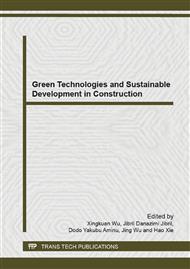[1]
Y. Liu, K. Li, Chemical Modification of Soy Protein for Wood Adhesives, Macromol. Rapid. Comm. 23 (2002) 739-742.
Google Scholar
[2]
C. Bianchini, A. Meli, Alternating Copolymerization of Carbon Monoxide and Olefins by Single-Site Metal Catalysis, Coord. Chem. Rev. 225 (2002) 35-66.
DOI: 10.1016/s0010-8545(01)00405-2
Google Scholar
[3]
R. Hashim, S.H.A. Hamid, O. Sulaiman, N. Ismail, M.H. Ibrahim, M. Hasnah, U. Selma, Extractable formaldehyde from waste medium density fiberboard, J. Trop. For. Sci. 21 (2009) 25-33.
Google Scholar
[4]
IAEA (International Atomic Energy Agency), Dosimetry in Diagnostic Radiology: An International Code of Practice, Technical Reports Series 457, Vienna, (2007).
Google Scholar
[5]
R. Hashim, W.N.A.W. Nadhari, O. Sulaiman, F. Kawamura, S. Hiziroglu, M. Sato, T. Sugimoto, T.G. Seng, R. Tanaka, Characterization of raw materials and manufactured binderless particleboard from oil palm biomass, Mater. Des. 32 (2011) 246-254.
DOI: 10.1016/j.matdes.2010.05.059
Google Scholar
[6]
J. Mallett, J.W. Albarran, A. Richardson, Critical care manual of clinical procedures and competencies, John Willy & Sons, UK (2013) 382.
Google Scholar
[7]
C.A. Brebbia, The sustainable world. Southampton, WIT press, Southampton, 2011, pp.336-338.
Google Scholar
[8]
JIS (Japanese Industrial Standard). JIS A 5908-2003 Particleboards. Japanese Standard Association, Tokyo. (2003).
Google Scholar
[9]
G. McL. Dryden, Animal nutrition science, CABI Pub., Wallingford, Oxfordshire, UK, 2008, pp.22-23.
Google Scholar
[10]
AOAC (AOAC International), Official methods of analysis of AOAC international, 16th ed., Gaithersburg, Maryland, (1996).
Google Scholar
[11]
Nadhari, W. N. A. B. W. Study on properties of binderless particleboard from oil palm (Elaeis guineensis) biomass. M. Sc. Thesis, Universiti Sains Malaysia, Penang, (2011).
Google Scholar
[12]
T. Matsumoto, A study on the properties of synthetic adhesives available in peninsular Malaysia, J. Trop. For. Sci., 3 (1988) 196-203.
Google Scholar
[13]
S.A. Osemeahon, J.T. Barminas, B.A. Aliyu, Effect of urea formaldehyde viscosity on some physical properties of a composite from reactive blending of urea formaldehyde with natural rubber, Int. J. Phys. Sci. 2 (2007) 242-248.
DOI: 10.4314/ijbcs.v2i4.39781
Google Scholar
[14]
R.A. Haupt, T.J. Sellers, Characterizations of Phenol-Formaldehyde Resol Resins, Ind. Eng. Chem. Res. 33 (1994) 693-697.
DOI: 10.1021/ie00027a030
Google Scholar


